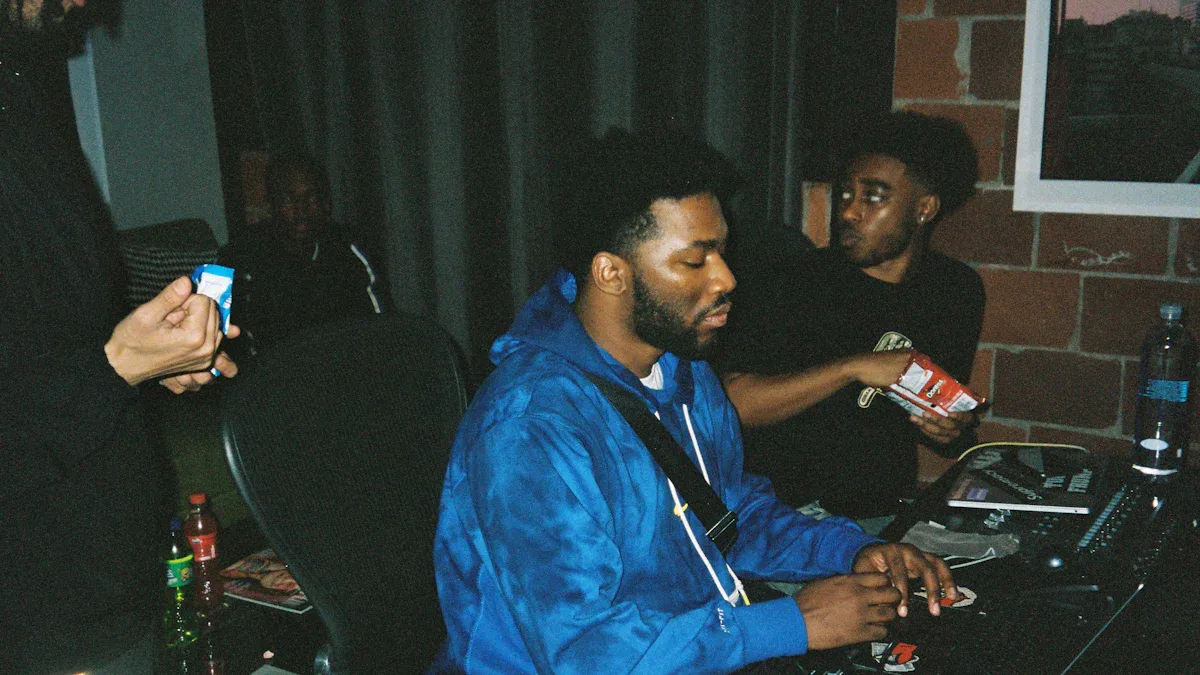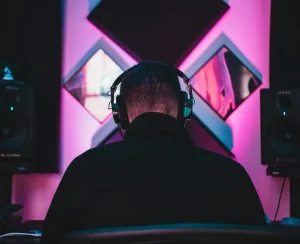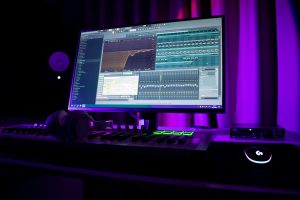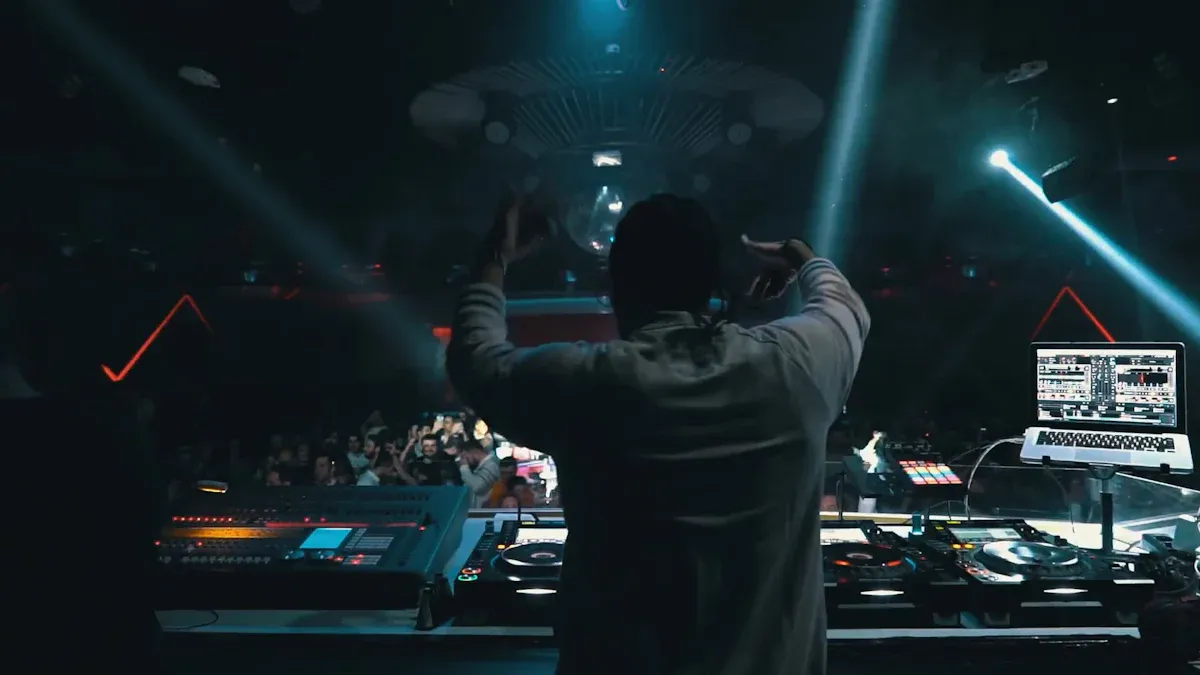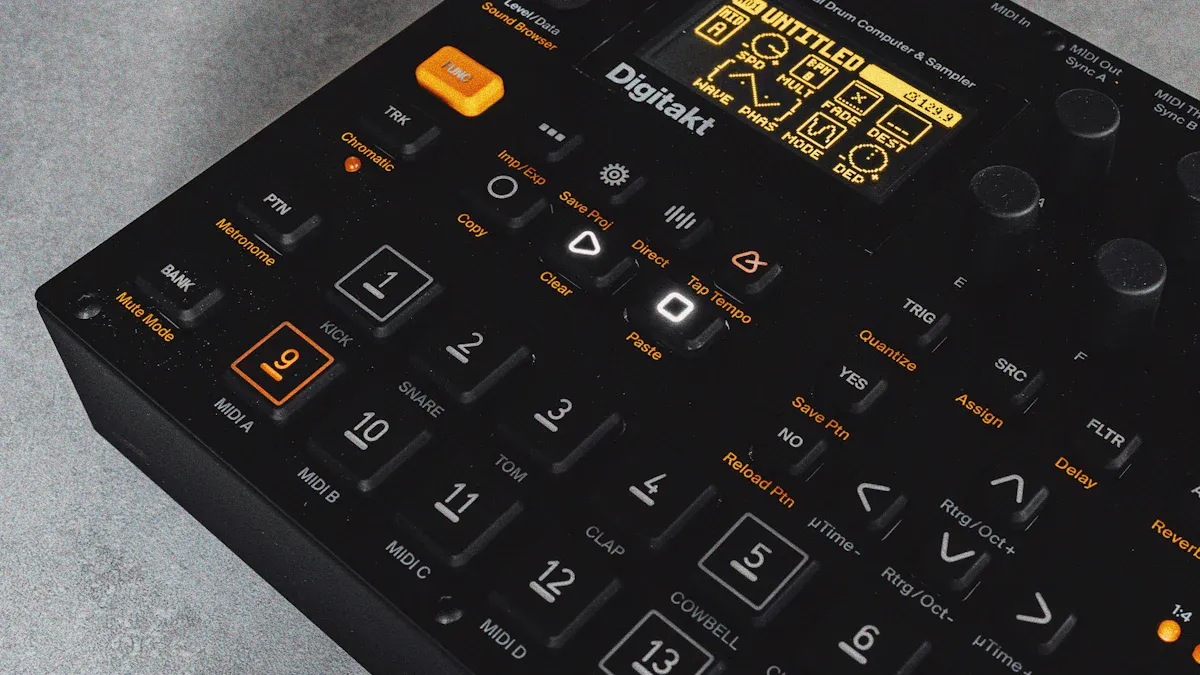Listeners often confuse Neo-Soul and R&B because both genres share deep roots in Black music traditions. Each genre highlights strong vocals and emotional storytelling. However, Neo-Soul uses live instruments more often, while R&B usually relies on digital production. Artists in Neo-Soul focus on organic sounds and expressive delivery. R&B often features polished beats and smooth melodies. Understanding these differences helps listeners appreciate the unique qualities of each style.
Key Takeaways
Neo-Soul and R&B both come from Black music traditions but differ in sound and production style.
Neo-Soul uses live instruments and focuses on emotional, authentic lyrics, while R&B often relies on digital beats and polished melodies.
R&B vocals emphasize technical skill and smooth harmonies; Neo-Soul vocals highlight raw emotion and personal connection.
Lyrics in R&B cover love, relationships, and real-life struggles; Neo-Soul lyrics focus on healing, self-discovery, and empowerment.
Famous artists like Erykah Badu and D’Angelo represent Neo-Soul, while Rihanna and SZA are key figures in R&B.
Origins
R&B Beginnings
R&B began in the late 1940s in African American communities. The term “rhythm and blues” replaced “race records” in 1949, showing a shift in how people viewed this music. Early R&B artists like Louis Jordan and Amos Milburn shaped the sound with energetic rhythms and strong vocals. The first unofficial Billboard R&B chart appeared in 1942 as the Harlem Hit Parade. Ray Charles made a big impact in 1949 with “Confession Blues,” and BB King’s “3 O’Clock Blues” reached No. 1 in 1952. These songs helped R&B gain national attention.
Atlantic Records played a key role in producing R&B for Black audiences. Artists such as LaVern Baker and Chuck Berry brought new styles to the genre. The 1950s and 1960s saw R&B blend with gospel, jazz, and pop, leading to the rise of soul music. Motown Records, founded by Berry Gordy in 1959, helped R&B reach a wider audience. The genre continued to evolve, with disco and funk influences in the 1970s and electronic sounds in the 1980s. By the 1990s, R&B had become a major force in popular music.
Timeline of R&B and Soul Music Development
| Period | Key Developments and Artists |
| Late 1940s | Emergence of rhythm and blues; Louis Jordan, Amos Milburn. |
| 1950s-1960s | Ray Charles, Ruth Brown; rise of soul music with Aretha Franklin, Marvin Gaye, The Supremes. |
| 1970s | Disco and funk; Stevie Wonder, James Brown, The Jackson 5. |
| 1980s | Electronic instrumentation; new jack swing; Lisa Stansfield. |
| 1990s | Hip-hop fusion; TLC, Destiny’s Child; neo-soul rises. |
| 2000s | Beyoncé, Usher; neo-soul revival. |
| 2010s | EDM, auto-tune; The Weeknd, Frank Ocean. |
Neo-Soul Emergence
Neo-soul emerged as a subgenre of R&B in the late 1980s and early 1990s. Artists wanted to bring back the feeling of classic soul music while adding new styles. Influences from 1970s legends like Marvin Gaye and Stevie Wonder shaped the sound. D’Angelo’s album Brown Sugar and Maxwell’s Urban Hang Suite marked important moments for neo-soul. Erykah Badu and Lauryn Hill also became leading voices in the genre.
The term “neo-soul” came from Kedar Massenburg of Motown Recordings. The Soulquarians, a group including Questlove, J Dilla, and James Poyser, helped define the style in the late 1990s. Neo-soul artists often used live instruments and focused on honest, emotional lyrics. The genre faced challenges in the early 2000s as the music industry struggled to market authentic Black artists. Despite this, neo-soul’s influence continued, and artists like Jill Scott and Maxwell kept the style alive. Today, neo-soul remains a respected part of R&B and soul music, inspiring new artists and listeners.
Neo-soul blends R&B, hip hop, funk, and classic soul music.
The genre stands out for its organic sound and deep connection to African-American culture.
Neo-soul artists often challenge mainstream R&B by focusing on authenticity and creative freedom.
Evolution
Changes in R&B
R&B has changed many times since its early days. In the 1950s, artists blended gospel and R&B, creating new soul styles. The 1960s brought more soul music to the charts, with Motown acts reaching pop audiences. By the late 1960s and 1970s, soul music absorbed psychedelic and rock influences. The 1970s and 1980s saw R&B evolve into contemporary r&b, shaped by disco, funk, and electro music. Artists like Marvin Gaye and Chaka Khan led these changes.
The table below shows how r&b and soul music shifted over the decades:
| Decade(s) | Historical Trends and Stylistic Shifts | Notable Artists and Influences |
| 1950s | Early innovators contributed to the emergence of soul music, blending gospel and R&B styles. | Ray Charles, Clyde McPhatter, Hank Ballard, Etta James |
| 1960s | Soul music dominated U.S. R&B charts, crossing over to pop charts; genre splintered by late 1960s into funk and socially conscious soul. | Ray Charles, Sam Cooke, Otis Redding, James Brown, Aretha Franklin, Motown acts |
| Late 1960s-1970s | Soul absorbed psychedelic and progressive rock influences, creating psychedelic and progressive soul subgenres. | Marvin Gaye, Jackson 5, Stevie Wonder, Curtis Mayfield, Isaac Hayes, Al Green, Bill Withers |
| 1970s-1980s | Soul evolved into contemporary r&b, influenced by disco, funk, electro music; emergence of quiet storm style. | Marvin Gaye, Smokey Robinson, Chaka Khan, Peabo Bryson, Larry Graham |
| Early 1990s | Neo-soul emerged as a blend of 1970s soul vocals/instrumentation with hip-hop beats and contemporary r&b sounds. | Jill Scott, Lauryn Hill, Erykah Badu; later artists influenced include H.E.R and Sza |
In the early 1980s, r&b artists started using digital and synthesized sounds. The ‘Minneapolis sound’ mixed synths with electric guitars and basses. The 1990s brought sampling, which added 1970s soul to modern r&b. In the 2000s, some artists returned to classic styles, while others pushed modern sounds. Recent industry reports show that while the overall r&b/hip-hop genre has shrunk since 2020, the r&b subgenre grew by 9.1% in early 2025. Songs like “30 For 30” by SZA and Kendrick Lamar have helped drive this growth in modern r&b streaming.
Neo-Soul’s Growth
Neo-soul started in the early 1990s as artists wanted to blend classic soul with hip-hop and modern r&b. The genre grew quickly because of the commercial success of artists like Jill Scott, Erykah Badu, and Maxwell. Their albums brought credibility to neo-soul and attracted new fans. The Soulquarians, a group of musicians active in the late 1990s and early 2000s, helped expand the genre’s reach. Their collaborations showed that neo-soul could appeal to both mainstream and subcultural audiences.
Neo-soul’s commercial success in both mainstream and niche markets shows its wide appeal.
Listener demographics for neo-soul include a mix of ages and backgrounds, reflecting the genre’s growing and diverse fan base.
The genre’s focus on live instrumentation and authentic styles sets it apart from other modern r&b music.
Neo-soul continues to inspire new artists and listeners. Its growth highlights the lasting influence of soul and r&b, as well as the power of blending old and new styles.
Musical Style
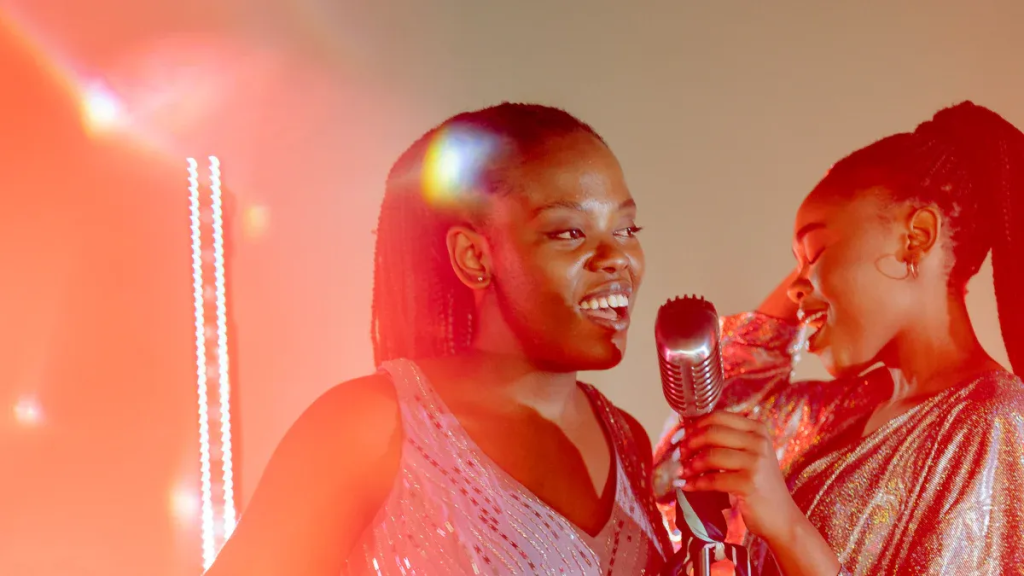
R&B Sound
The r&b sound has changed over time, but some features remain the same. Early r&b came from gospel, jazz, and blues. It used syncopated rhythms and strong vocals. In the 1980s, r&b added funk, soul, and pop, which made the sound more popular around the world. The 2010s brought hip-hop, electronic, and indie influences. Many artists started to blend r&b beats with other styles, creating a unique sound for each era. Modern r&b often uses digital tools and sampling. Producers use computers to shape the r&b sound, making it smooth and polished. Some reviews use technology to compare r&b tracks, but these systems sometimes mislabel sounds, like calling bass a guitar. Even with these issues, the r&b sound stands out for its emotional depth and catchy r&b beats.
Neo-Soul Instrumentation
Neo-soul stands apart because of its focus on live instruments. Musicians often play real drums, bass, guitar, and horns. For example, G’Beau’s album The Tears features live musicians from Prince’s New Power Generation. Van Hunt uses strong bass lines and rock-funk flavors, while Prince’s album The Rainbow Children shows jazz-inspired drumming. These artists help create a sound that feels warm and organic. The Minneapolis sound, shaped by Prince, also influenced both r&b and neo-soul. Live instrumentation gives neo-soul a unique sound that connects it to classic soul music. This approach makes the music feel more personal and real.
Note: Neo-soul blends r&b beats, hip-hop, and soul, but always keeps live instruments at its core.
Production Approaches
Production styles in r&b and neo-soul show clear differences. R&b production often uses digital tools, like synthesizers and drum machines, to create r&b beats. Producers use techniques such as physical modeling synthesis and modular synthesis to build complex sounds. Modern r&b also uses AI and spatial audio for new effects. In contrast, neo-soul production focuses on organic sounds. Artists use field recordings and real instruments to add depth. Mastering trends in 2024 show that r&b tracks often have wide stereo images and loudness levels that fit commercial standards. Neo-soul tracks keep a more natural sound, with less focus on loudness and more on soulful expression. Both genres borrow from funk, jazz, and hip-hop, but their production choices give each style its own sound.
Vocal and Emotional Expression
R&B Vocals
R&B vocals play a central role in shaping the genre’s sound. Singers use a wide range of techniques to create expressive and memorable performances. Experts often evaluate r&b vocals by listening for pitch accuracy, clear articulation, and strong emotional delivery. Musically trained listeners can often predict which r&b vocals people will enjoy based on these features. Many r&b artists use melismatic runs, breath control, and vocal embellishments like riffs and vibrato. These techniques help singers add depth and style to their sound.
R&B vocals often fall into categories such as Velvety Smooth, Powerful Soul, or 90s Classic. Each style brings its own flavor to the music. Singers refine their sound by shaping phrases and layering harmonies. This process gives r&b beats a soulful edge and makes the music stand out. The heavy reliance on vocals in r&b means that each singer’s voice becomes the main focus of the song. The combination of technical skill and emotional authenticity helps r&b connect with listeners on a deep level.
R&B vocals often blend technical precision with heartfelt emotion, creating a signature sound that defines the genre.
Neo-Soul Delivery
Neo-soul delivery stands out for its emotional honesty and connection with the audience. Singers in this genre often use minimalistic arrangements to let their vocals shine. Nai Palm’s performances show how poetic lyrics and stripped-down sound can highlight vulnerability and emotional depth. Her songs create an intimate feeling that draws listeners in.
Erykah Badu’s live shows, especially her performance of “Tyrone,” reveal raw emotion and humor. She uses vocal cracks and breathy delivery to amplify the emotional impact. This approach makes her sound feel real and relatable. Allen Stone’s acoustic sets also show the warmth and intensity found in neo-soul. His smooth vocals and personal songwriting create a strong bond with the audience.
Neo-soul artists focus on delivering soulful music that feels authentic. Their sound often channels classic influences while adding modern touches. The result is a style that values emotional expressiveness and genuine connection over perfection. Neo-soul delivery invites listeners to experience the music on a personal level, making each performance unique.
Lyrical Themes
Common Topics in R&B
R&B lyrics often explore a wide range of topics that reflect real-life experiences. Many songs focus on love, heartbreak, and relationships. Artists use their music to share stories about desire, trust, and betrayal. Over the years, researchers have studied the meaning of the lyrics in popular R&B songs. A content analysis of 279 songs found that references to substance use appear often. The study showed that sexual and financial motivations are more common in R&B than in other genres. This research used careful coding and statistical methods to compare themes across different types of music.
Another large-scale study looked at over 1,000 songs and music videos from 1998 to 2018. Reviewers found a 180% increase in negative themes, such as substance use, violence, and misogyny, in R&B and hip hop. These themes appeared more often in R&B music videos than in other genres. The meaning behind these lyrics can shape how listeners view relationships and personal choices. Positive and neutral themes, like hope or friendship, did not change much over time. R&B continues to use lyrics that reflect both the struggles and joys of life.
R&B lyrics often give listeners a window into the artist’s world, showing both the good and the bad sides of life.
Neo-Soul Lyrics
Neo-soul lyrics focus on self-discovery, healing, and social awareness. Artists in this genre often write about finding the meaning of life and understanding personal struggles. They use poetic language to express deep feelings and spiritual growth. Many neo-soul songs encourage listeners to look for meaning in everyday moments. The meaning of the lyrics often centers on empowerment and authenticity.
Neo-soul artists also address issues like identity, community, and love. They use their music to inspire change and promote unity. Unlike some R&B songs, neo-soul tracks rarely highlight negative themes. Instead, they aim to uplift and connect with the soul of the listener. The meaning in neo-soul lyrics often comes from honest storytelling and a desire to make a positive impact.
| Genre | Common Themes | Approach to Meaning |
| R&B | Love, heartbreak, substance use, money, violence | Real-life stories, emotional highs and lows |
| Neo-Soul | Self-discovery, healing, empowerment, unity | Poetic, spiritual, uplifting |
Soul vs R&B: Comparison
Key Differences
Soul and R&B share many roots, but they show clear musical differences. Soul music often uses live instruments like horns, bass, and organs. The sound feels raw and emotional. R&B, especially modern R&B, uses more electronic sounds, such as synthesizers and drum machines. The sound is smooth and polished. Singers in soul music deliver powerful and upfront vocals. They show deep emotion and often sing about struggle, hope, and love. R&B singers use layered harmonies and focus on a clean, controlled sound. Their songs cover a wide range of topics, from relationships to nightlife.
Musicians in each style listen and perform differently. Soul musicians pay close attention to the actions that create the sound. They focus on timing and the feel of live performance. R&B producers listen for sonic effects and how sounds fit together in a mix. This difference shapes how each genre feels and sounds to the listener.
Listeners can spot soul vs r&b by paying attention to the instruments and the way singers express emotion. Soul music feels more live and direct, while R&B often sounds more produced and smooth.
Here is a side-by-side comparison to help highlight the main differences:
| Aspect | Soul / Neo-Soul | R&B / Contemporary R&B |
| Vocal Style | Raw, powerful, emotional, upfront | Smooth, layered, polished harmonies |
| Instrumentation | Live band feel: horns, strings, bass, organs | Electronic: synths, drum machines, samples |
| Chord Complexity | Simpler, direct chords from gospel and blues | More complex chords, synth pads, chopped samples |
| Thematic Content | Deep ballads about struggle, love, hope | Wide-ranging topics, including club and romance |
| Genre Evolution | Rooted in classic soul, blends with hip-hop in neo-soul | Evolving with pop and hip-hop, new techniques |
| Representative Artists | Aretha Franklin, Otis Redding, Erykah Badu | SZA, The Weeknd, Frank Ocean |
Shared Elements
R&B and soul music both come from African American musical traditions. They use strong vocals and emotional storytelling. Both styles often blend influences from gospel, jazz, and blues. The sound in each genre aims to connect with listeners on a deep level. Many artists move between the two styles, showing how close they are.
Both genres use rhythm and melody to create catchy songs.
Singers in both styles focus on expressing real feelings.
Many songs in both genres talk about love, life, and personal growth.
Live performance plays a big role in both, even when R&B uses more digital tools.
Tip: To tell soul vs r&b apart, listen for live instruments and raw emotion in soul music. R&B usually has a smoother, more produced sound with electronic beats.
Listeners can practice telling the difference by focusing on the sound of the instruments and the way the singer delivers the song. If the music feels live and the vocals are strong and upfront, it likely belongs to soul or neo-soul. If the sound is polished with electronic beats and layered harmonies, it is probably R&B.
Key Artists
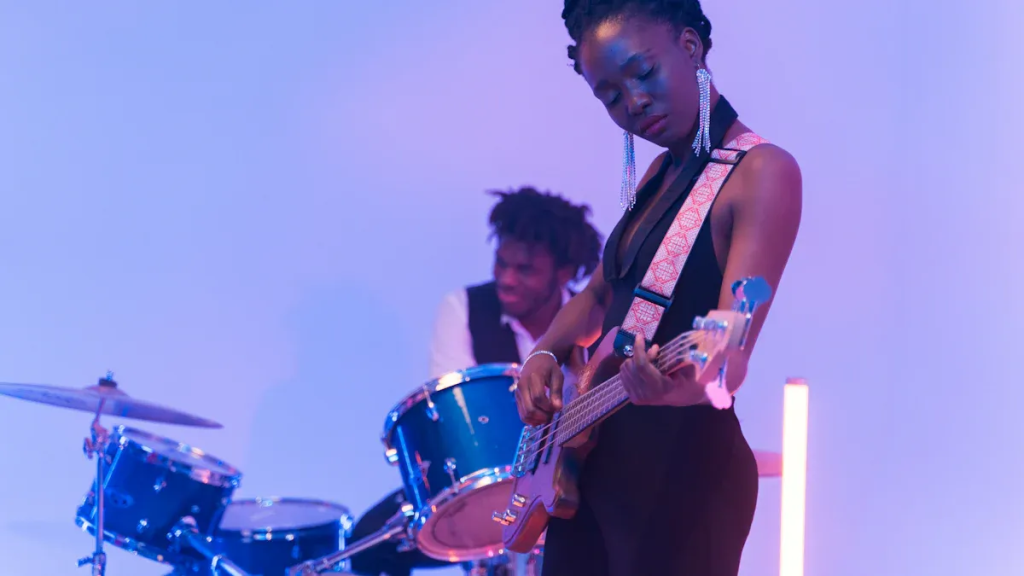
R&B Icons
Many artists have shaped the sound and popularity of r&b. Rihanna stands out with her powerful voice and chart-topping hits. Her song “Love On The Brain” has over 1.4 billion streams on Spotify. SZA’s “Broken Clocks” and Chris Brown’s “No Guidance” also show the genre’s wide appeal. Jazmine Sullivan’s “Pick Up Your Feelings” won a Grammy for Best R&B Performance. These artists have earned awards and set records, showing their lasting influence.
| Artist | Song Title | Album | Spotify Streams | Certification / Awards | Notable Achievements / Facts |
| Rihanna | Love On The Brain | ANTI | 1.42 billion | Considered one of her best vocal performances | First song commissioned for ANTI; classic from her catalog |
| SZA | Broken Clocks | Ctrl | 582 million | Double Platinum | Fourth single from debut album; samples River Tiber and Daniel Caesar |
| Chris Brown ft. Drake | No Guidance | N/A | 1.01 billion | Grammy nomination for Best R&B Song | Collaboration after long feud; topped charts; broke records; in Spotify’s Billions Club |
| Jazmine Sullivan | Pick Up Your Feelings | Heaux Tales | 80 million | Grammy winner for Best R&B Performance (tie) | Recognized for vocal and artistic qualities; won first-ever tie with Silk Sonic |
Neo-Soul Pioneers
Neo-soul artists changed the music scene by blending classic soul with new ideas. D’Angelo’s album Brown Sugar brought gospel harmonies and funk rhythms together. Erykah Badu’s Baduizm introduced jazz and Afrocentric style. Lauryn Hill’s The Miseducation of Lauryn Hill mixed soul, hip hop, and honest songwriting. Maxwell’s Urban Hang Suite used jazz and smooth vocals. Angie Stone and Jill Scott added deep emotion and storytelling. Chico DeBarge brought real-life stories to his music. These pioneers inspired many new artists and helped neo-soul grow.
| Neo-Soul Pioneer | Contribution and Historical Significance | Critical Reception and Influence |
| D’Angelo | Released Brown Sugar (1995), blending gospel harmonies, funk rhythms, and vulnerability; redefined male R&B with organic sound; Voodoo (2000) pushed R&B boundaries with groove and improvisation. | Seen as the architect of modern Neo-Soul; influenced artists to prioritize authenticity over commercial trends. |
| Erykah Badu | Debut Baduizm (1997) introduced jazz-inflected, Afrocentric Neo-Soul; embodied the genre’s mysticism and individuality; Mama’s Gun (2000) showed experimental vulnerability. | Regarded as the genre’s matriarch; her style influenced Alternative R&B and artists like Ari Lennox and Janelle Monáe. |
| Lauryn Hill | The Miseducation of Lauryn Hill (1998) fused Soul, Hip Hop, and confessional songwriting; redefined female artistry in a male-dominated industry. | Critically acclaimed for poetic lyricism and cultural impact; her influence persists over 20 years later. |
| Maxwell | Urban Hang Suite (1996) offered sophisticated, jazz-influenced Neo-Soul; known for lush arrangements and falsetto vocals; experimental Embrya (1998). | Recognized for elegance and vocal influence on artists like Miguel and The Weeknd; a gold standard in the genre. |
| Angie Stone | Early contributor with Black Diamond (1999); bridged classic soul and Neo-Soul; known for emotional depth and mentorship. | Praised for authenticity and connecting generations; her songs remain staples in R&B. |
| Jill Scott | Debut Who Is Jill Scott? (2000) introduced poetic storytelling and conversational style; blended jazz, gospel, and soul. | Influential for spoken-word style and lyrical depth; inspired subsequent Neo-Soul artists. |
| Chico DeBarge | Long Time No See (1997) marked his Neo-Soul reintroduction; combined traditional R&B with hip hop sensibilities; authentic storytelling. | Recognized as an underrated contributor who added real-life narratives to the genre. |
Crossover Artists
Some musicians move between genres and blend different styles. Bill Withers started his music career at age 32 and became famous for songs like “Ain’t No Sunshine” and “Lean on Me.” He won Grammy Awards and joined the Rock and Roll Hall of Fame. Prince, born in Minneapolis, played many instruments and mixed funk, pop, and rock. His hits like “Purple Rain” and “1999” changed music history. Gary Clark Jr. learned from blues legends and won Grammys for songs that mix blues, rock, soul, and hip hop. These crossover artists connect r&b, soul, and other genres, showing how music can bring people together.
| Artist | Biographical Highlights | Notable Songs & Achievements | Awards & Honors | Genre Influence |
| Bill Withers | Born 1938, Navy service, started music career at 32, left music in 1985 | “Ain’t No Sunshine” (Grammy-winning), “Lean on Me”, “Lovely Day”, “Just the Two of Us” | Grammy Award, Rock and Roll Hall of Fame 2015 | Bridged Soul and Pop |
| Prince | Born in Minneapolis to musical parents, multi-instrumentalist, cultural visionary | “1999”, “Little Red Corvette”, “Let’s Go Crazy”, “Purple Rain” | Multiple Grammys and cultural impact | Funk, Pop, Rock |
| Gary Clark Jr. | Born 1984, mentored by blues legends, breakout at Eric Clapton’s festival in 2010 | “Bright Lights”, “Please Come Home” (Grammy-winning), “Ain’t Messin Around”, “This Land” (Grammy-winning) | Multiple Grammys | Blues, Rock, Soul, Hip Hop fusion |
Neo-soul and R&B share deep roots in Black music and focus on strong vocals and emotion. Neo-soul uses live instruments and poetic lyrics. R&B often features digital production and smooth melodies. Understanding both genres helps listeners enjoy music more.
Explore artists like Erykah Badu, D’Angelo, SZA, and Rihanna.
Listen to classic albums and new releases.
Music keeps changing. Stay curious and discover new sounds in both genres.
FAQ
What makes neo-soul different from traditional R&B?
Neo-soul uses live instruments and poetic lyrics. R&B often features digital beats and smooth melodies. Neo-soul artists focus on authentic sounds. R&B artists usually aim for a polished, radio-friendly style.
Can an artist belong to both genres?
Yes. Some artists blend both styles in their music. For example, Lauryn Hill and D’Angelo use elements from R&B and neo-soul. Their songs show how genres can mix and evolve.
Why do people confuse neo-soul and R&B?
Both genres share roots in Black music and use strong vocals. Many artists move between the two styles. The sounds sometimes overlap, which makes it hard to tell them apart.
How can someone tell if a song is neo-soul or R&B?
Listen for live instruments and raw emotion in neo-soul. R&B songs often have electronic beats and smooth, layered vocals. Paying attention to these details helps listeners spot the difference.
